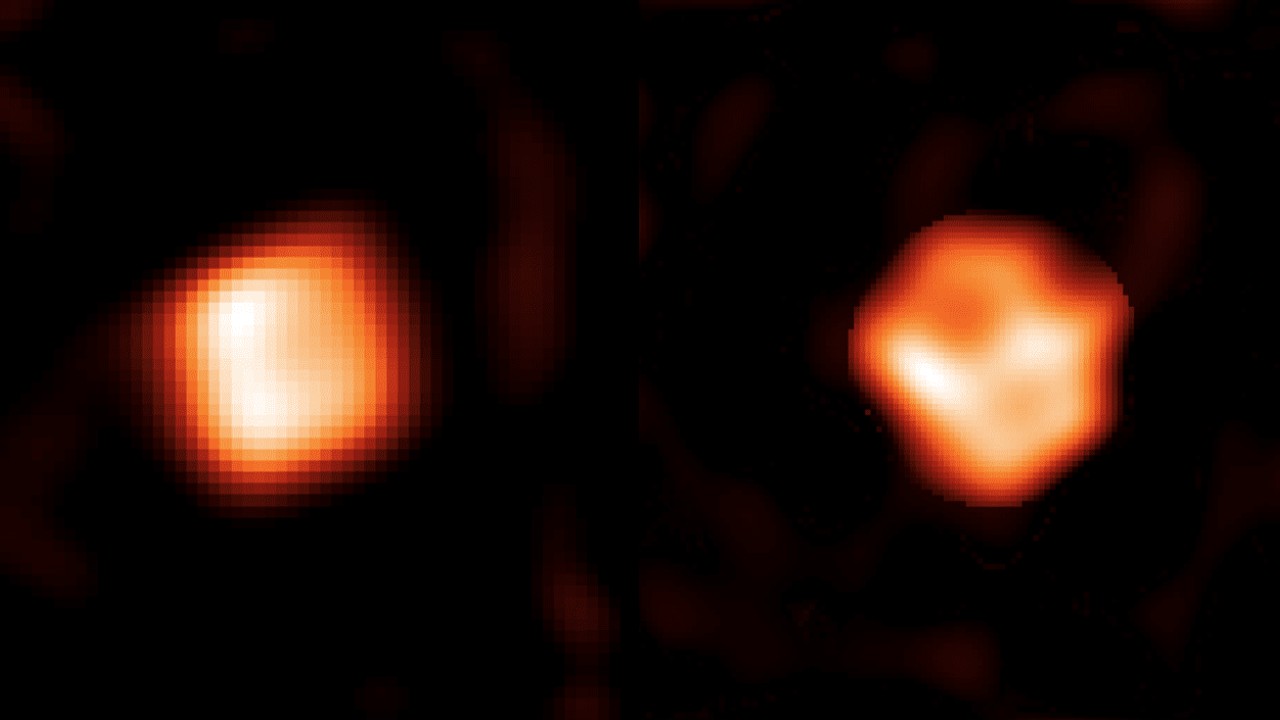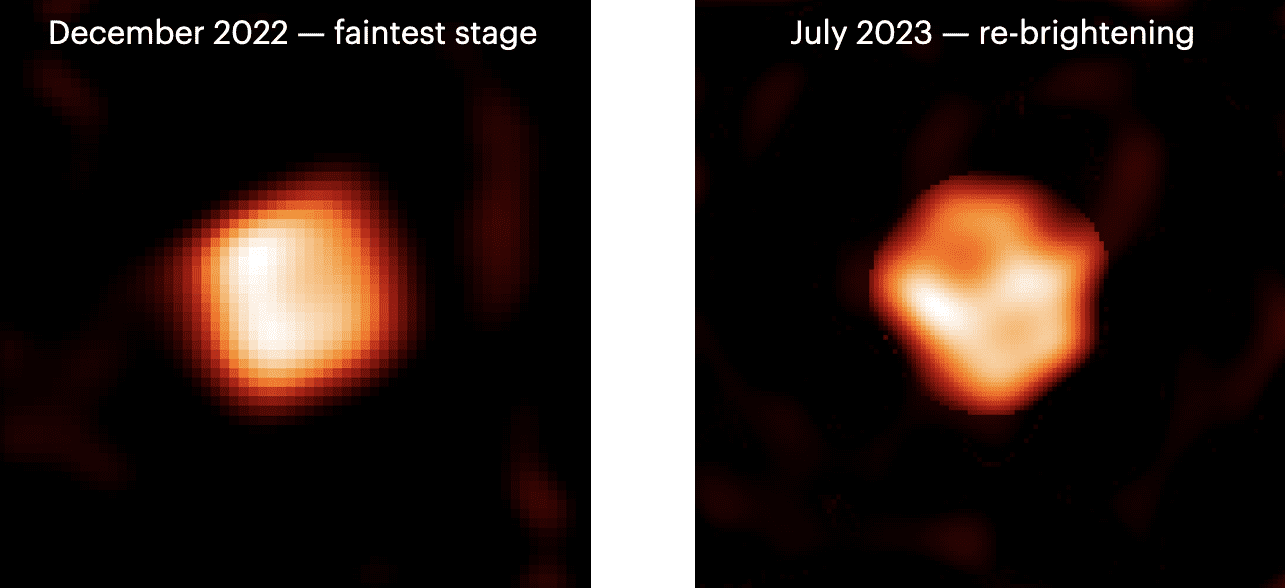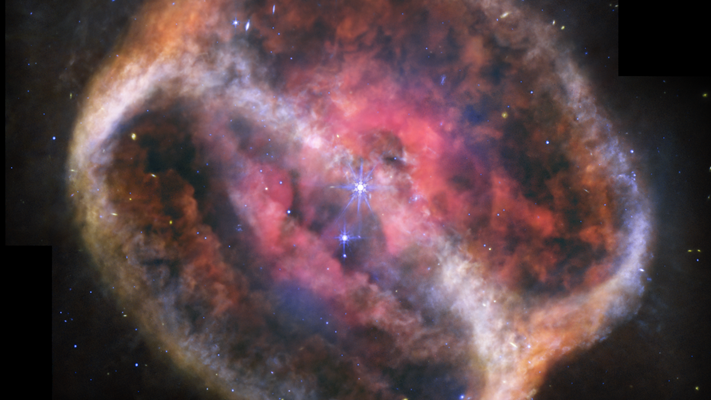Mystery solved! 1st close-up images of giant star explain its bizarre dimming
The gigantic star RW Cephei mysteriously grew dimmer in recent years before brightening once more.

Yet another star in our universe has been caught acting strangely.
On Monday (Jan. 8), astronomers reported that RW Cephei, a hypergiant star in the constellation Cepheus about 16,000 light-years from Earth, has recently begun brightening after dimming "very dramatically" for the past two years, according to Narsireddy Anugu, a staff scientist at the CHARA Array in California.
The most promising explanation is that the star previously coughed up a gas cloud, which cooled as it moved further away and blocked the star's light from our view, causing it to appear as if it was growing fainter, Anugu said. He and an international team of astronomers reported their findings in a study published in The Astronomical Journal.
Related: The mysterious dimming of supergiant star Betelgeuse may finally be explained (photo)
In comparison to Betelgeuse, a well-studied red supergiant which grew puzzlingly fainter in 2019 and sparked excitement that it was about to go supernova — only to reveal a burst of dust occluding our view of the star — RW Cephei is hotter, heavier and brighter. Being one of the largest in the Milky Way, it is 1,000 times bigger than our sun, so huge in fact that if it took the place of our own star, its outer layers would stretch beyond the orbit of Jupiter. Despite its colossal size in its cosmic home in the constellation Cepheus, the star is so distant it takes up a minuscule portion of our sky, appearing a million times smaller than a full moon.
In a press briefing on Monday (Jan. 8) at the American Astronomical Society conference being held in New Orleans and online, Anugu revealed the first close-up images of the gigantic star, which began mysteriously dimming in 2020 and reached its faintest in December 2022, dipping to a third of its usual brightness.

The images, produced by the CHARA array (Center for High Angular Resolution Astronomy), a sensitive six-telescope facility atop Mount Wilson, show that RW Cephei does not appear round as one would expect of stars but rather seems irregularly blotchy. This is due to dark and bright patches across its surface, caused by the orbiting gas cloud that was expelled by the star.
Get the Space.com Newsletter
Breaking space news, the latest updates on rocket launches, skywatching events and more!
Follow-up observations with the Apache Point Observatory in New Mexico showed the star dimmed more sharply in visible colors compared to infrared, according to a statement by Georgia State University, which operates the CHARA array.
"This is a tell-tale sign that the starlight was obscured by microscopic dust clouds blocking our view."
The recently detected gas cloud circling the star could be one of many "grand eruptions" from RW Cephei, and each such violent flare-up causes the star to lose chunks of its mass, Douglas Gies, director of the CHARA array, said in the same statement.
"This one was special because the cloud was ejected in the direction of Earth, so we were in the right place to witness the full effects of the cataclysm."
Join our Space Forums to keep talking space on the latest missions, night sky and more! And if you have a news tip, correction or comment, let us know at: community@space.com.

Sharmila Kuthunur is a Seattle-based science journalist focusing on astronomy and space exploration. Her work has also appeared in Scientific American, Astronomy and Live Science, among other publications. She has earned a master's degree in journalism from Northeastern University in Boston. Follow her on BlueSky @skuthunur.bsky.social









